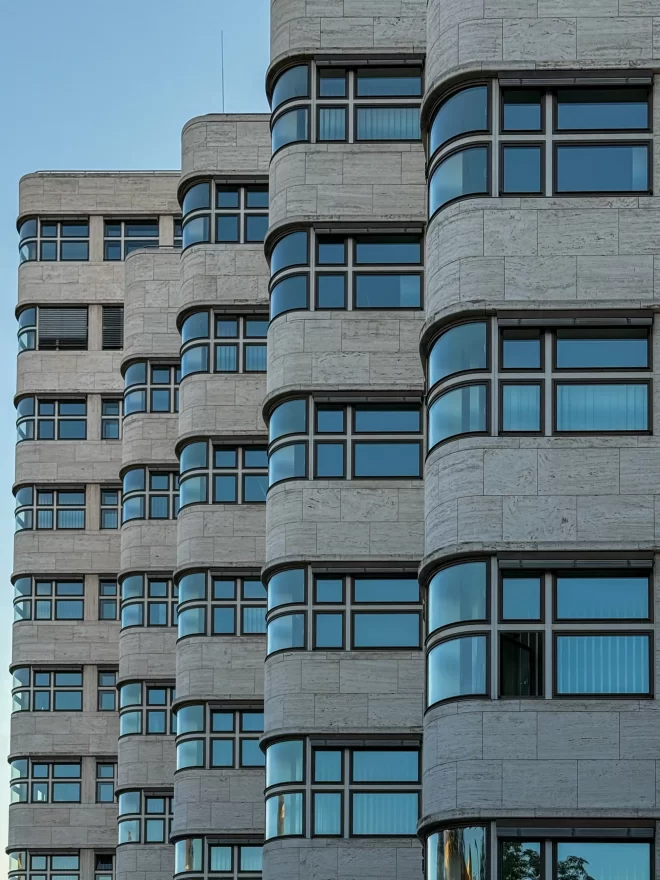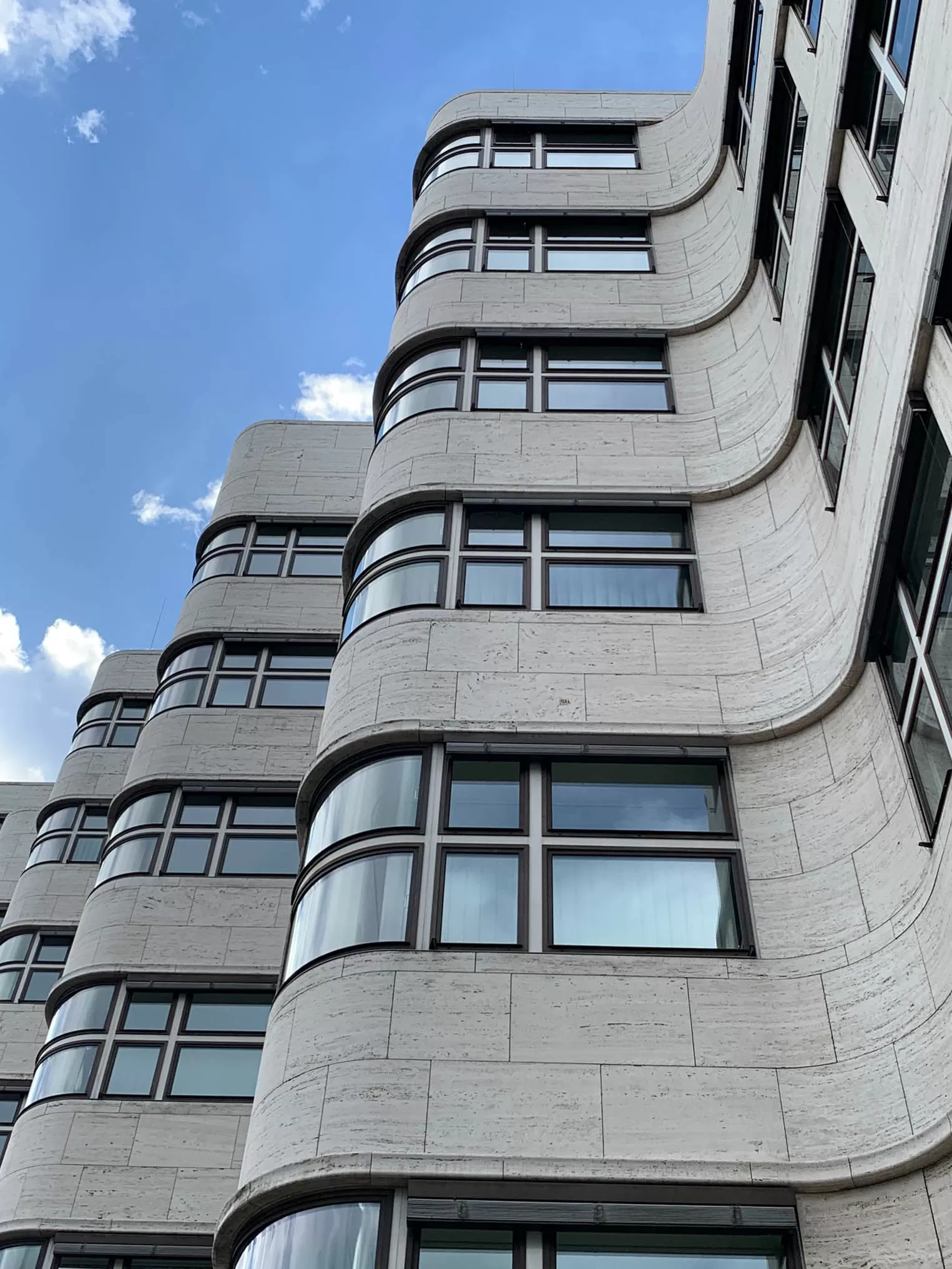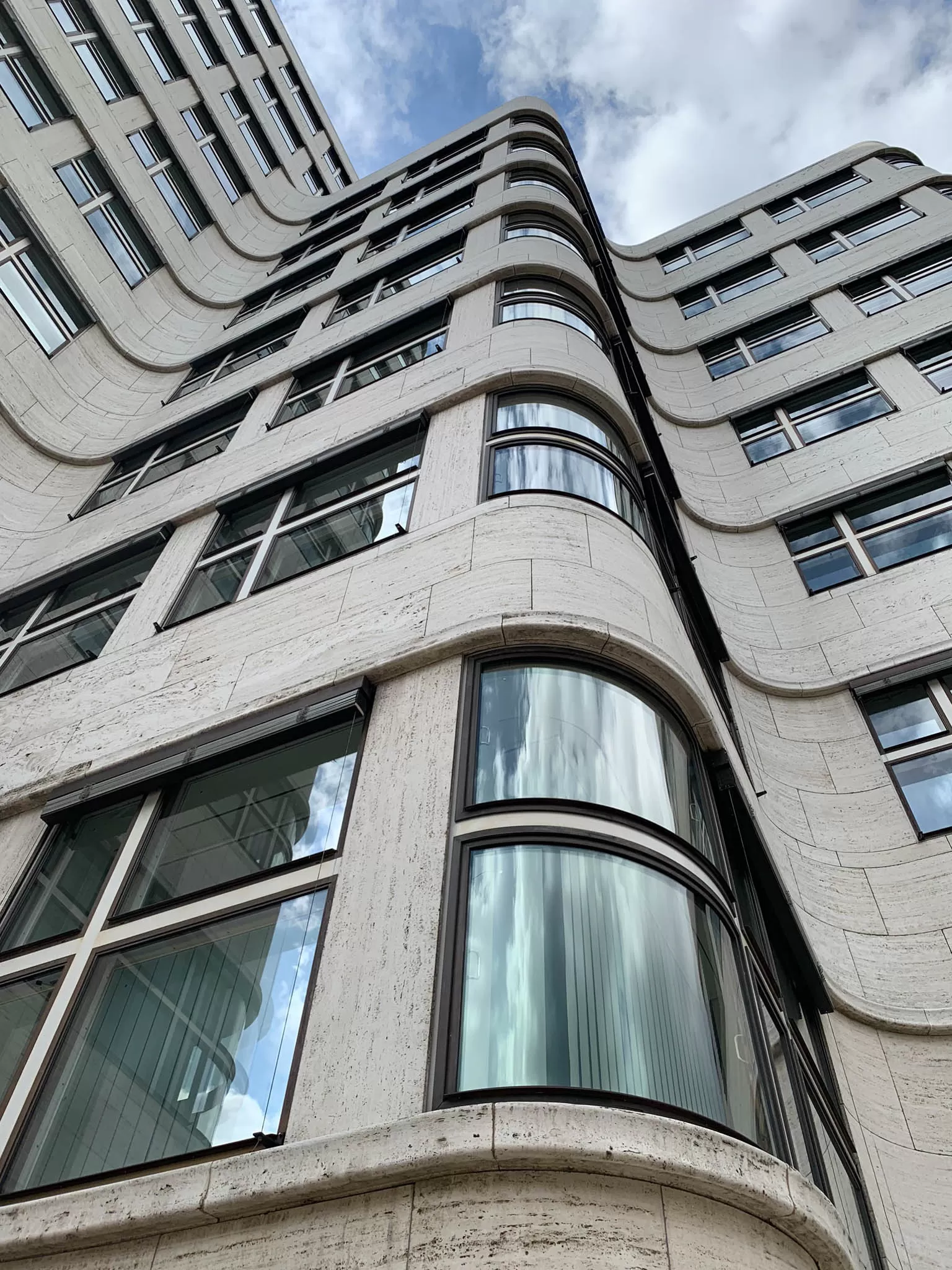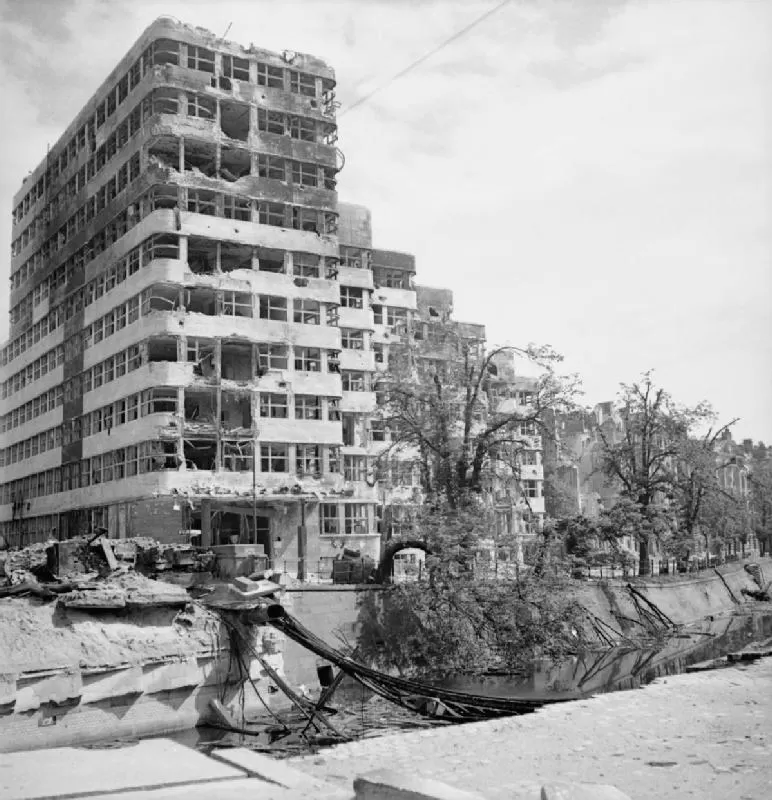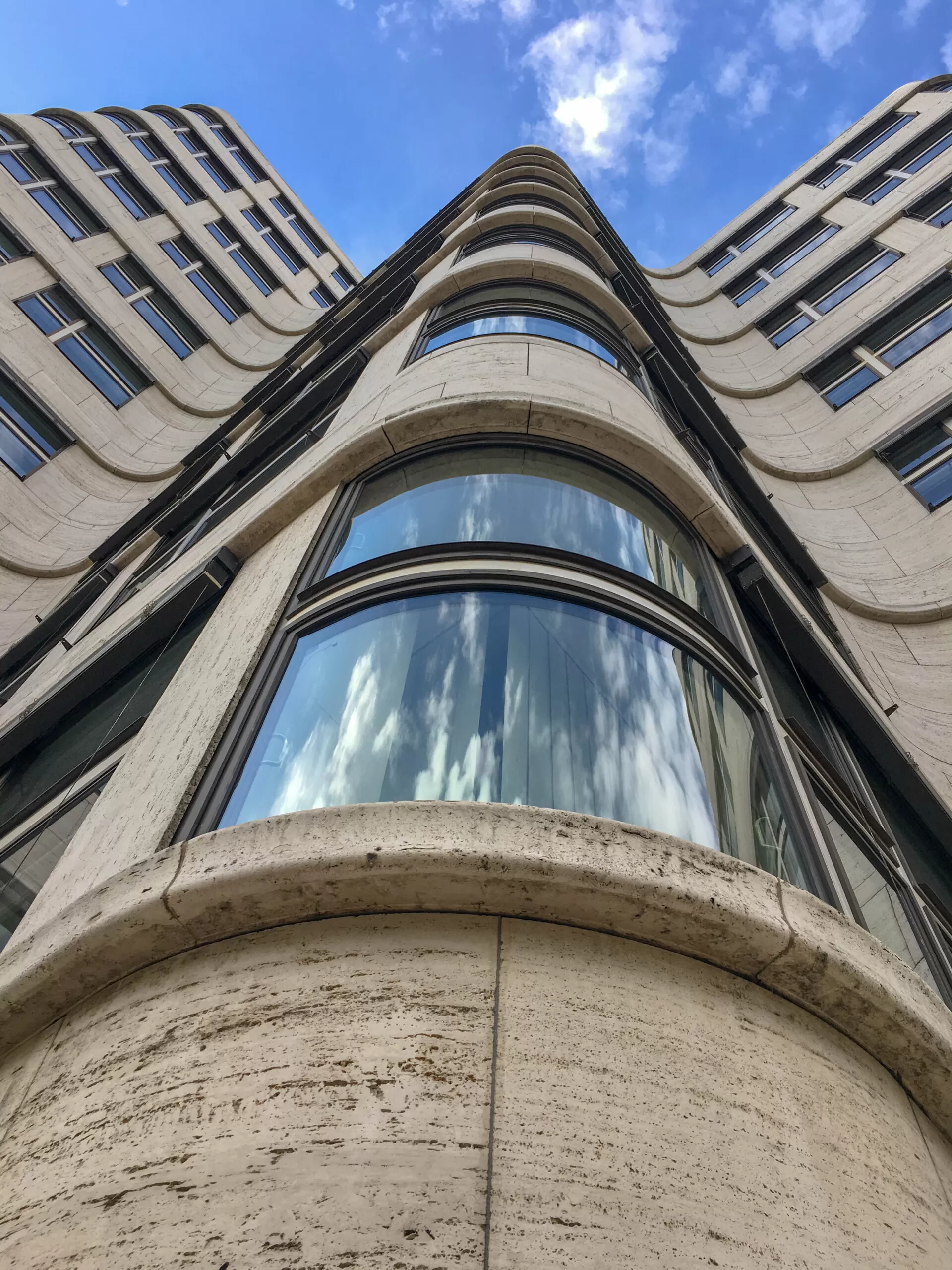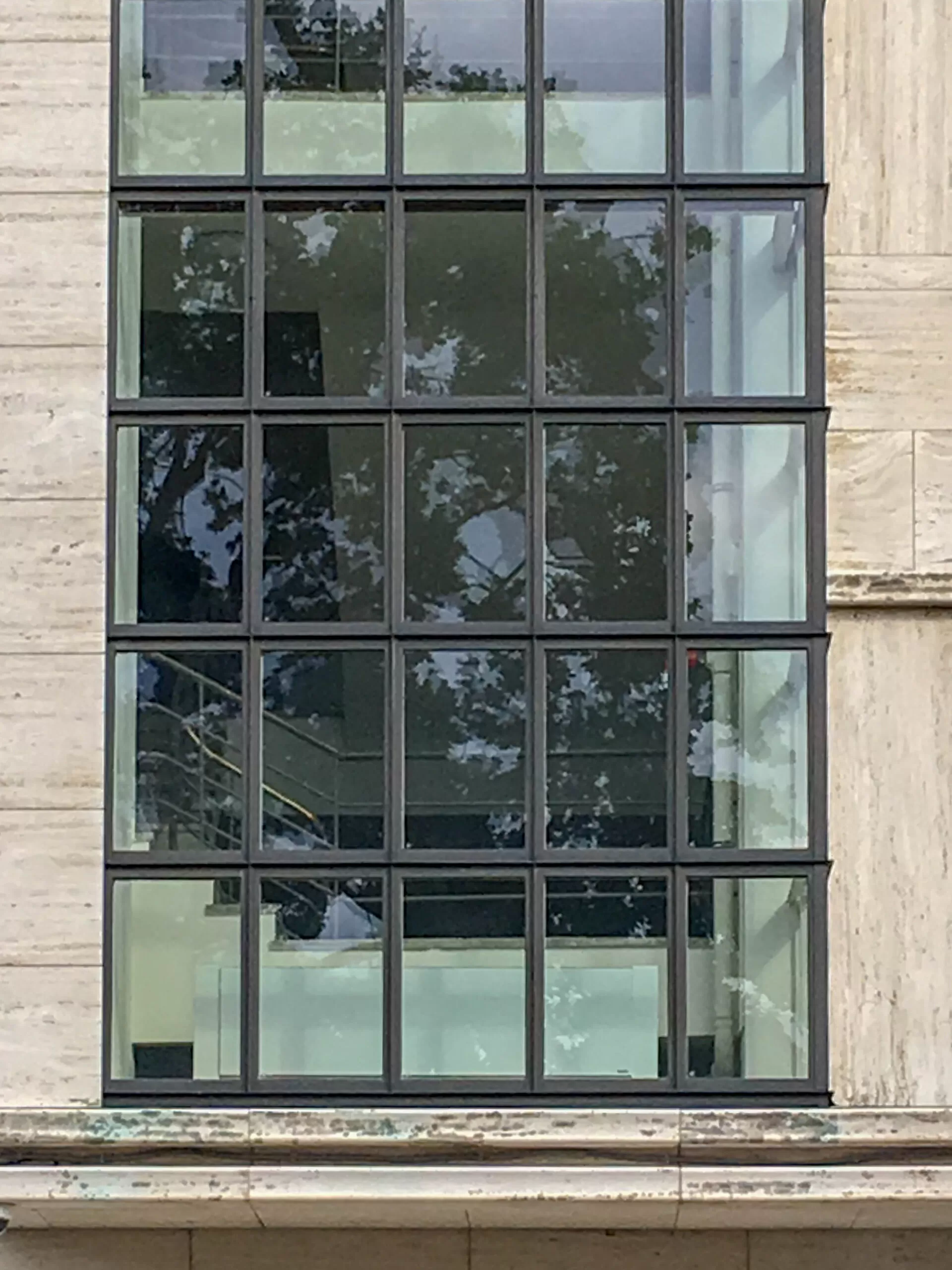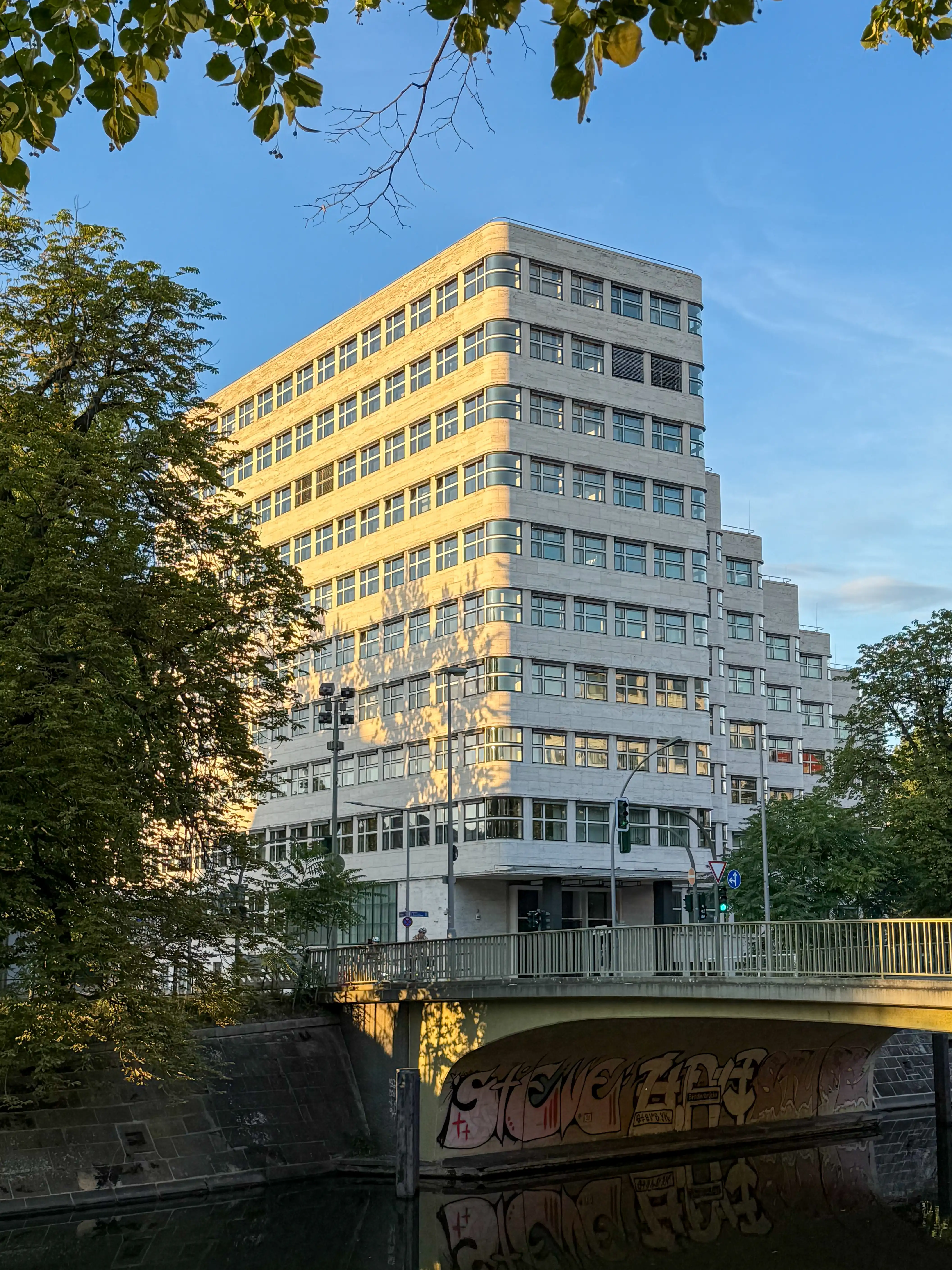
Shell-Haus, 1930-1932. Architect: Emil Fahrenkamp. Photo: Daniela Christmann
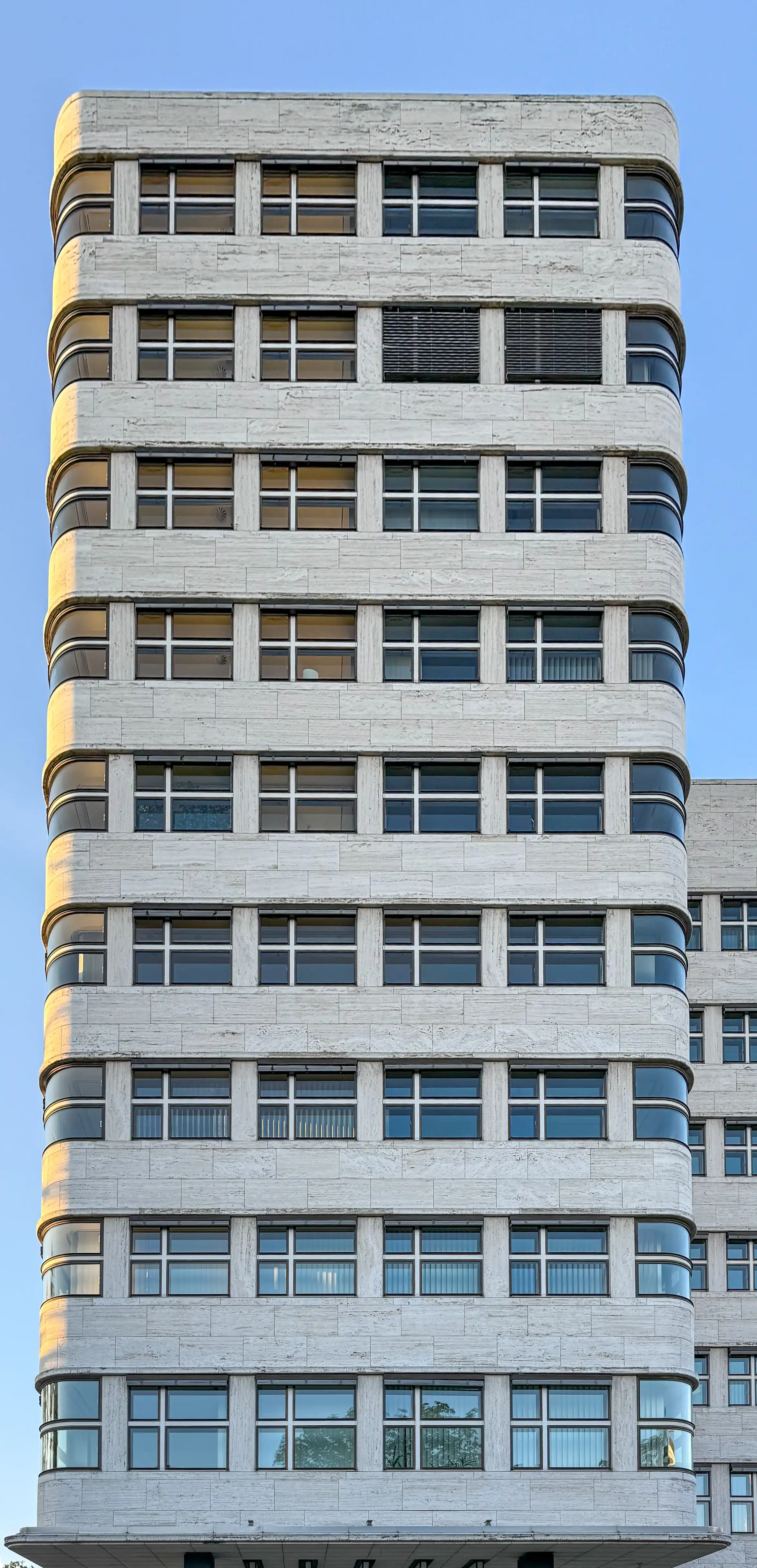
Shell-Haus, 1930-1932. Architect: Emil Fahrenkamp. Photo: Daniela Christmann

Shell-Haus, 1930-1932. Architect: Emil Fahrenkamp. Photo: Daniela Christmann
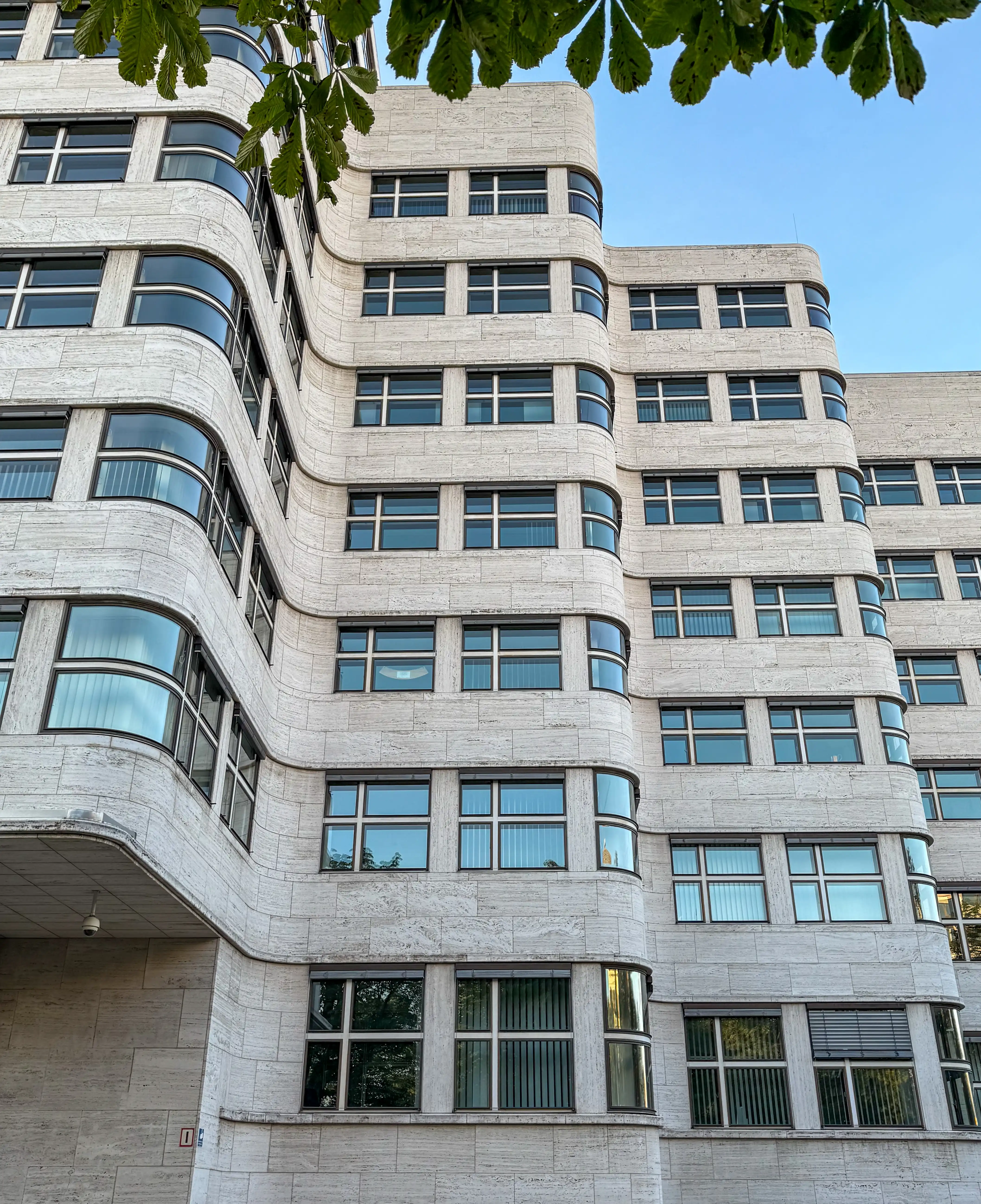
Shell-Haus, 1930-1932. Architect: Emil Fahrenkamp. Photo: Daniela Christmann
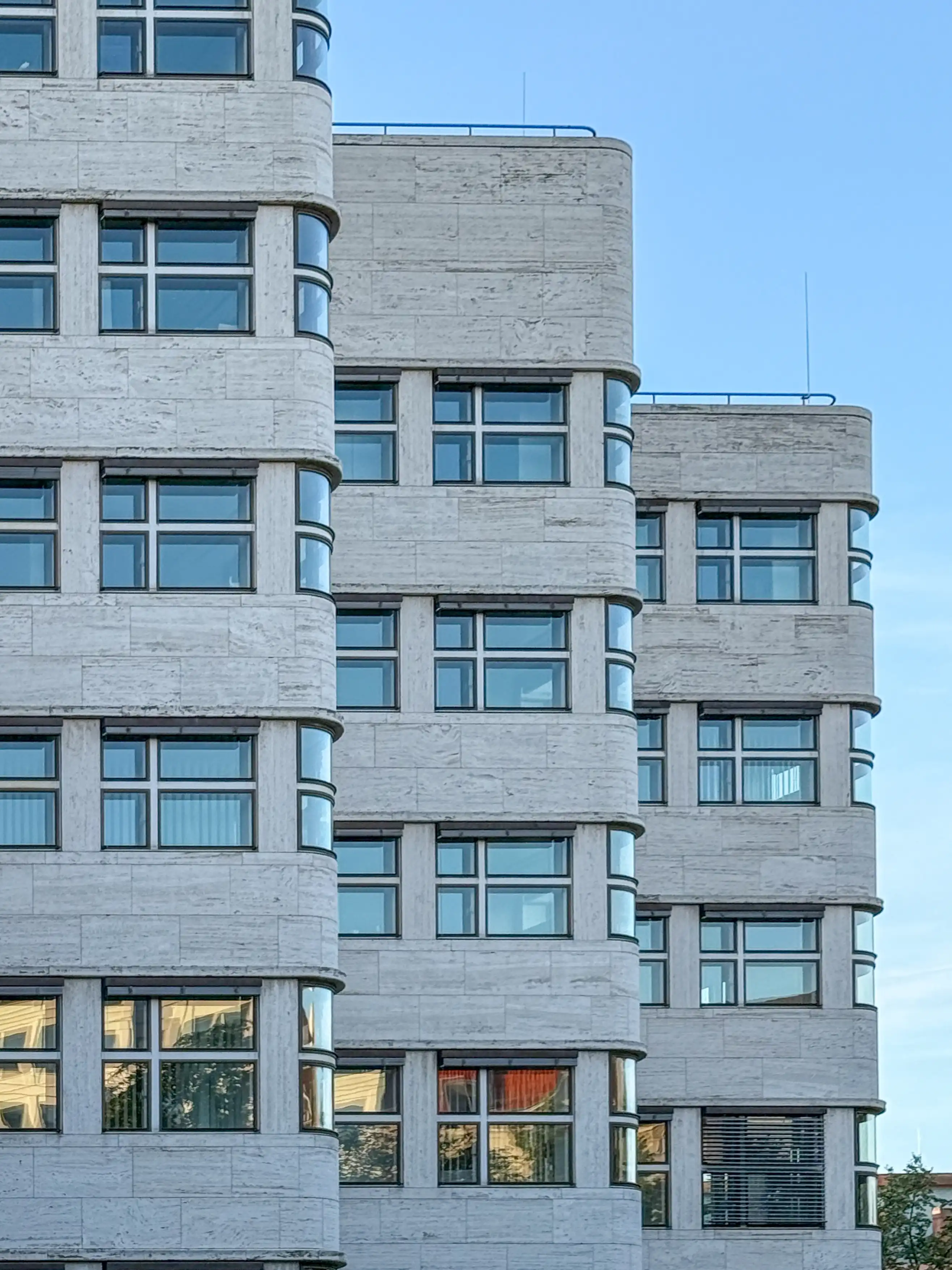
Shell-Haus, 1930-1932. Architect: Emil Fahrenkamp. Photo: Daniela Christmann
1930 – 1932
Architect: Emil Fahrenkamp
Reichpietschufer 60, Berlin, Germany
The listed Shell-Haus was completed from 1930 to 1932 as the headquarters of the Shell subsidiary Rhenania Ossag Mineralölwerke on the Landwehrkanal in Berlin according to plans by architect Emil Fahrenkamp.
Building
The steel-skeleton building is clad in travertine and has asymmetrically divided windows with steel frames. Its facade on the Landwehr Canal is offset by one window axis and has rounded corners. The building’s height rises from six to ten stories.
Due to the rounding of the windows and building corners, as well as the connection of the individual building elements, the facade resembles a wave movement.
Construction
The remarkable novel construction, designed by civil engineer Gerhard Mensch, ensures high stability and a vibration-free stand.
The shell house encloses an interior courtyard and is founded on a reinforced concrete trough that extends about 9 meters below street level.
The side walls of the trough are separated from the structural elements above by a 2-cm-wide air slot to absorb the vibrations generated by road traffic.
The commercial building has three large staircases with elevators.
It has a two-story basement with an underground garage on the first level. The upper floors contain variable-sized office spaces, predominantly single- and double-axis.
The second floor has a meeting room, and the tenth floor has casino and kitchen rooms.
The flat roofs are accessible as terraces.
Restoration
The building was heavily damaged during the war, especially on the upper floors, and was extensively renovated at the end of the 1990s.
Considered one of the most important examples of modern office building architecture from the Weimar Republic, the Shell-Haus is a notable landmark.
Since 2012, it has been the site of the German Federal Ministry of Defense‘s second official headquarters, alongside the Bendlerblock.

